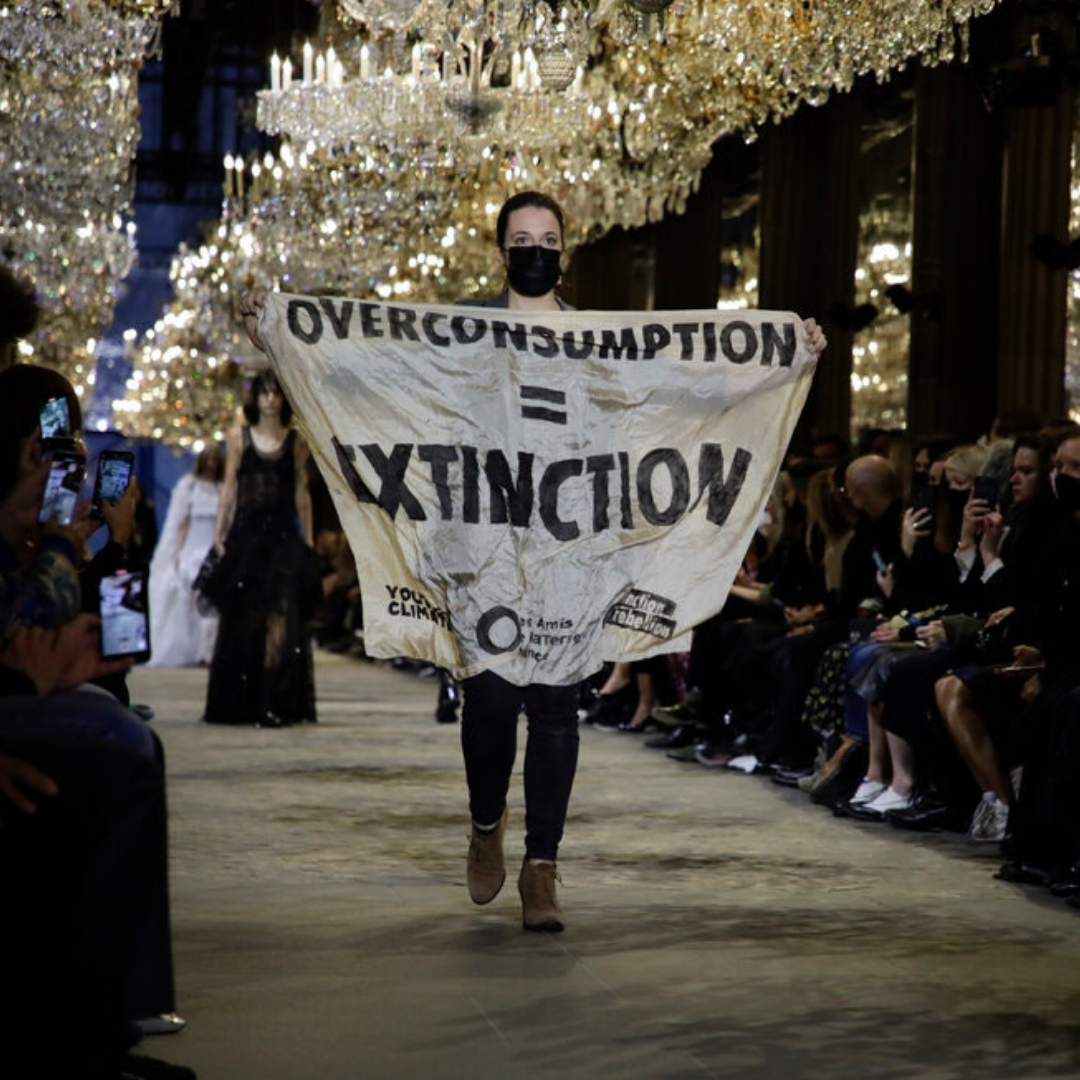The dangerous trend of fast-fashion ‘haul’ videos
Climate activist, Marie Cohuet, briefly joining models on the runway at the Louvre Museum for the Louis Vuitton show at Paris Fashion Week.
A haul video refers to content posted where individuals show off what they have purchased or been gifted (usually in large amounts) and what it cost.
Synonymous for implementing this trend as part of their social media strategy is Chinese fast fashion brand Shein, which has recently become the largest online retailer. During the lockdown, hashtag SHEINHAUL on video-sharing platform TikTok racked up over 2.6 billion views. Most online creators or influencers will not even be sponsored and will return the clothing after spending an average of $500 with the brand. This all comes in exchange for clout from the clickable content that haul-related content generates. The affordable, size-inclusive, and on-trend clothes that Shein produces became a hit with gen-Z consumers, and the founder admits that the company releases 700 to 1000 new items every day. Haul videos have exasperated a culture where buying mountains of clothes each week is normalised to keep up with daily emerging trends.
This is not about shaming those who shop fast fashion out of necessity; it’s about the influencers who encourage overconsumption.

